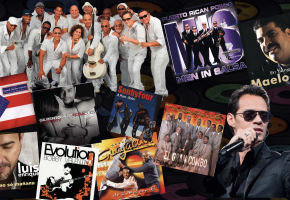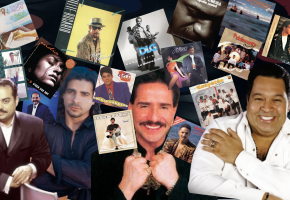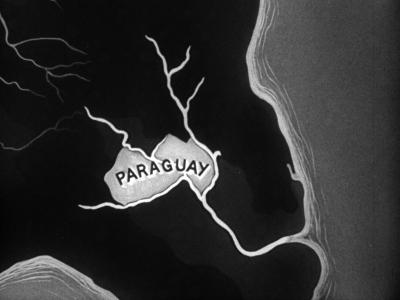So- who- or what- is Las Maravillas de Mali? To answer that, we first need to go back to West Africa, 1960. The late 50s trickle of West African Independence grows to a flood, with seventeen sub-Saharan states becoming independent in that year, including Mali, ideals of socialism and ‘modernisme’ are bubbling under everywhere, and leaders are looking to revolutionaries such as Fidel Castro for inspiration. Mali organises a state-wide music scholarship competition, which takes place in December 1963, ten applicants from different parts of Mali being chosen. The idea is to send the successful candidates to Cuba as students, where they would learn music, return to Mali and teach.
Of the ten chosen, Boncana is the only one with a track record: for a couple of years, he’s been leading a group called Le Négro Band in his home town in Gao, East Mali. They go to Cuba in 1963. Some stay and some return to Africa, but not before recording a number of songs in Havana’s Areito studios in 1968 in various Cuban styles from cha cha cha, danzón and charanga to boogaloo and mambo, the most famous of which is Rendez-vous Chez Fatimata, an outstandingly successful commingling of Bambara and Afro-Cuban styles and tempos. A sole LP and a couple of singles are released in Cuba, France and West Africa, the group gradually drifts apart, there’s a military coup in Bamako in the same year- and that’s that.
And so to the resurrection in 2016
Except, it wasn’t. Throughout the 70s and 80s, Boncana’s solo career went from strength to strength internationally, recording and performing in Paris, New York and Abidjan, covering everything from afro-funk, latin flavours of all kinds, and even advertising commercial jingles. But somehow, he couldn’t get the ambition of reforming Las Maravillas out of his head.
Meanwhile, in 1999, a French photo-journalist, Richard Minier, curated a photography exhibition, in Arles, France called ‘Swinging Bamako’. Impressed by the exuberance of post-Independence Mali and President Modibo’s brand of African Socialism, this led Minier on a seventeen -year trek through Niger, Mali, Cote d’Ivoire and Cuba on the trail of Boncana and the music of Las Maravillas. Encouraged by this renaissance of interest in his music, Boncana decided to resurrect the band’s music and spirit three years ago.
The Barbican show took the form of a gran charanga orchestra, a style that started in the Havana brothels of the early twentieth century before moving on to playing danzón, the most genteel and European influenced of Cuban styles, for a middle-class clientele. By the 20s, the single violin had multiplied to a six-piece string section and the repertoire moved from the more formal arrangements of bandleaders such as Antonia Maria Romeu and Electo “Chepín’ Rosell to the livelier swing of Orestes Lopez and Enrique Jorrin (whose La Enganadora is considered the first-ever cha cha cha, and would almost certainly have featured as a study-piece for Boncana in 60s Havana).
Cuban charanga today takes in all styles, from the classic approach of Orquesta Aragón to the timba, funk and jazz-inflected sounds of the mighty Los Van Van and Charanga Habanera; but Las Maravillas retain a classic feel, with strong West African inflections particularly evident in guest kora star Mory Kante’s Bambara vocals. Boncana’s flute on the 6/8 tempo Mariétou, originally recorded in Abidjan for Abdou Lassisi’s Sacodis label in the early 80s, takes us almost to Andean territory in the first section, breaking into a Guinean chant-vibe in the second half.
The original 60s Maravillas book, too, was brought thrillingly to life, with musical director and double-bassist Felipe Cabrera (formerly of Gonzalo Rubalcaba and Herbie Hancock’s bands) calling the tunes, the 3-violin, 1-viola string section rising to the occasion and turning on a dime from slow to fast at the mere flicker of a Cabrera eyebrow. Guest pianist Pepe Rivero, an astonishingly accomplished player in both set-pieces and improvisation, took time out from his regular ‘Yoruba Suite’ concerto that toured Europe recently to great acclaim. The band’s signature tune , the 60s hit Chez Fatimata, brought the formal set to an end, and a deliriously happy audience to its feet. But that was just the beginning of the end, as the elegant Maiga, sweeping across the stage in his black silk coat and clearly delighted with the show and the audience response, treated us to another half-hour of encores.
If you missed Boncana Maïga’s transatlantic musical spectacular this time, fear not. I fancy it won’t be long before something as exceptional as Las Maravillas de Mali make a return trip to the UK.

















